
| Open Frame Solenoid Structure and Components | Pull Force Test Method (Weight method) | |
| Pull Time Testing Method | Return Time Testing Method | Temperature Rise Measurement Method |
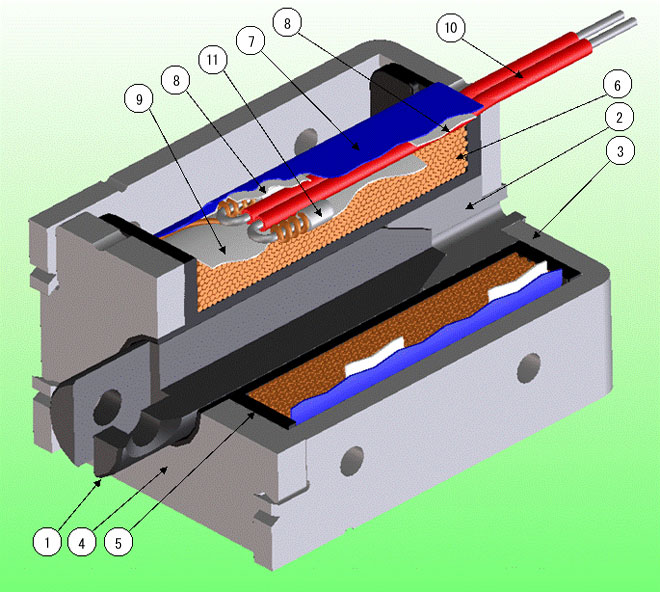
| No. | Part Name | Material Description * | Surface Finishing * |
| ① | Plunger | Free-cutting carbon steel SUM24L | Fluoroplastic Coating |
| ② | Plunger Stopper | Free-cutting carbon steel SUM24L | Haxavalent Chromium Free Zinc Plating |
| ③ | Yoke | Electrolytic Zinc-coated Steel Sheets SECC | - |
| ④ | Yoke Cover | Cold Rolled Carbon Steel Sheets SPCC | Haxavalent Chromium Free Zinc Plating |
| ⑤ | Bobbin | Polybutylene Terephthalates PBT | - |
| ⑥ | Magnet Wire | Polyurethane Copper Wire UEW | - |
| ⑦ | Cover Tape | Polyester Film Electrical Insulating Tape | - |
| ⑧ | Insulation Tape | Polyester Film Electrical Insulating Tapen | - |
| ⑨ | Insulation Paper | Nomex Insulation Paper | - |
| ⑩ | Lead-wire | Heat Resistant PVC wire UL1007LF | - |
| ⑪ | Solder | - |
 |
 |
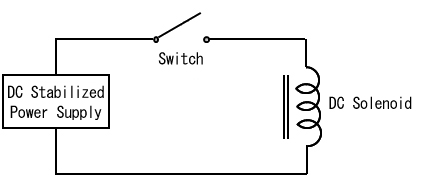
| (1) Environment |
Ambient Temp.: 20±2%, Relative Humidity: 65±5%, Atmospheric Pressure: 1013hPa. The following test conditions may be accepted, only if it’s confirmed these conditions does not arouse doubts in the test result; Ambient Temp.: 20±15%, Relative Humidity: 65±20%, Atmospheric Pressure: 860~1060hPa. |
| (2) Item |
① Pull Force: Weight Load Pull Method ② Weight Load Pull Down Method ③ Weight Load Pull Down Method |
| (3) Method |
① Fix a Solenoid at a testing stroke. ② Set up a testing voltage in DC Stabilized Power Supply. ③ Turn on the switch (for MIN. 300ms) and check the heaviest weight load that Plunger is pulled to the fixed core completely. For Solenoids specifying less than 300ms ON time, a required ON time shall be applied for testing. |
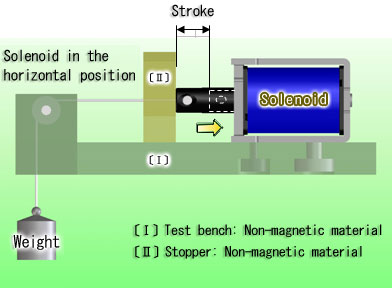 |
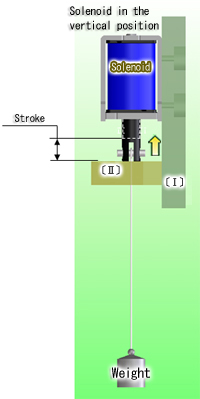 |
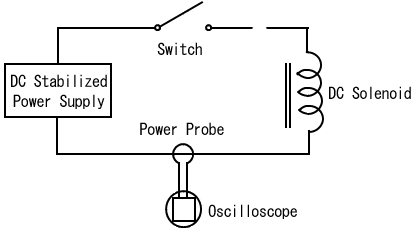
| (1) Environment |
Ambient Temp.: 20±2%, Relative Humidity: 65±5%, Atmospheric Pressure: 1013hPa. The following test conditions may be accepted, only if it’s confirmed these conditions does not arouse doubts in the test result; Ambient Temp.: 20±15%, Relative Humidity: 65±20%, Atmospheric Pressure: 860~1060hPa. |
|
(2) Method |
① Fix a Solenoid at a testing stroke. ② Set up a testing voltage in DC Stabilized Power Supply. ③ Turn on the switch and read pull time from a current waveform on the oscilloscope. |
|
(3) Current Waveform |
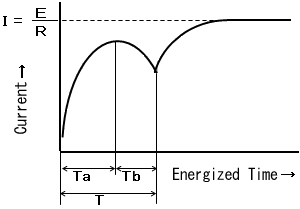 |
Ta: Plunger Travel Start Time Tb: Plunger Travel Time T: Pull time (Plunger to complete a given stroke after switched ON.) |
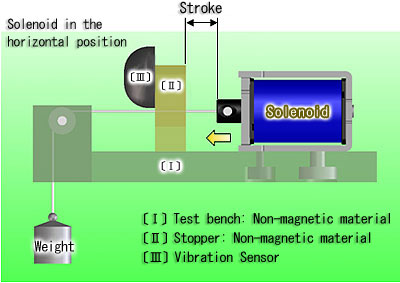 |
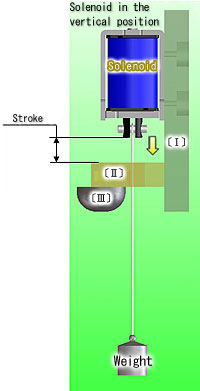 |
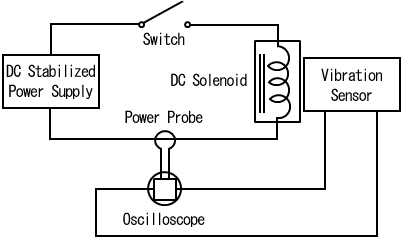
| (1) Environment |
Ambient Temp.: 20±2%, Relative Humidity: 65±5%, Atmospheric Pressure: 1013hPa. The following test conditions may be accepted, only if it’s confirmed these conditions does not arouse doubts in the test result; Ambient Temp.: 20±15%, Relative Humidity: 65±20%, Atmospheric Pressure: 860~1060hPa. |
| (2) Method |
① Fix a Solenoid at a testing stroke. ② Set up a testing voltage in DC Stabilized Power Supply. ③ Solenoid is in energized state. Turn off the switch, and Plunger returns and hits the Stopper. Read the waveform recorded on the oscilloscope. |
| (3) Waveform | |
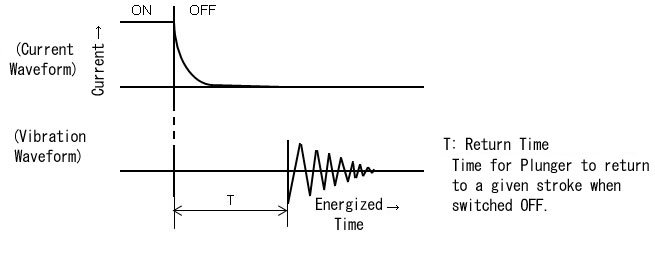 |
|
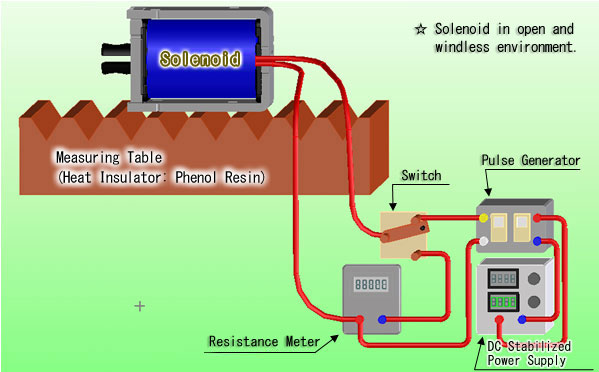
| θ:Temperature Rise (K) | t1:Ambient temperature before energized(℃) |
| R1:Resistance before energized(Ω) | t2:Ambient temperature after energized(℃) |
| R2:Resistance after energized(Ω) |
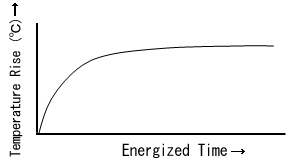
| Top Page|Products|Applications|Accomplishments |Technical Info|Equipment|About Us |Contact Us |Environmental Line |Site Index | |||
|
2-5-5, Shinmei-cho, OKAYA, Nagano, 394-0004, Japan TEL: +81-266-23-4517 FAX: +81-266-23-4523 |
Copyright(c) TDS Co.,Ltd. All Right Reseived | ||